If WiFi keeps disconnecting on your Windows 11/10 PC, read this post to know how to troubleshoot the issue. Many users have been facing this strange issue where their WiFi disconnects or completely drops every few minutes and then reconnects automatically. This happens throughout the day while playing games, downloading large files, using a VPN, or when the computer sleeps.
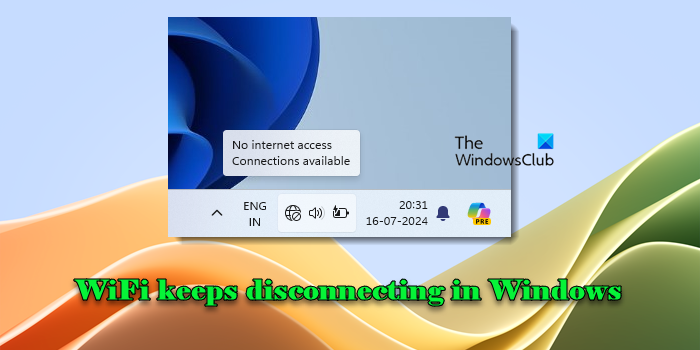
Why is my Wi-Fi automatically disconnecting?
Wi-Fi disconnecting automatically can be caused by various issues, such as weak signals, router issues, network adapter issues, software conflicts, or ISP issues. Sometimes, a simple restart can resolve such issues, while other times, you may need to start with basic checks and then move on to more advanced solutions to fix Network connectivity issues in Windows.
WiFi keeps disconnecting in Windows 11/10
If WiFi keeps disconnecting on your Windows 11/10 PC, we recommend using these fixes to troubleshoot the issue:
- Hibernate and turn the PC On again
- Run Network and Internet troubleshooter
- Disable Power Saving Mode for Network Adapter
- Reset Network Settings
- Update or Reinstall the Network driver
- Disconnect the Wi-Fi card and connect it again
Let us see this in detail.
1] Hibernate and turn the PC On again

According to a few users, the issue resolves after hibernating and turning the PC on again. Hibernate mode essentially reloads the device drivers, clears temporary network stack issues, re-establishes network connection, and resets hardware. This gives the system and its components, (including the WiFi adapter) a fresh start, which can resolve intermittent connectivity problems in Windows.
Related: WiFi keeps asking for password on Windows laptop
2] Run Network and Internet troubleshooter
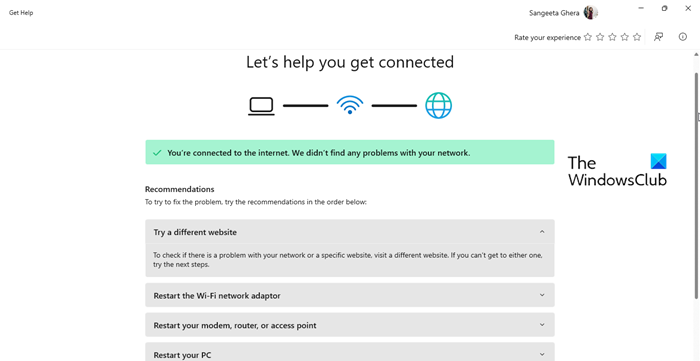
Next, run the built-in Network and Internet troubleshooter.
Press Win + I to open the Settings app. Navigate to System > Troubleshoot > Other troubleshooters. Click Run next to Network and Internet.
The troubleshooter will check your network configuration, reset the network adapter, reset the TCP/IP stack, and scan for various other issues that might be affecting your network connection. It will then fix the issue automatically or guide what steps to take next.
3] Disable Power Saving Mode for Network Adapter
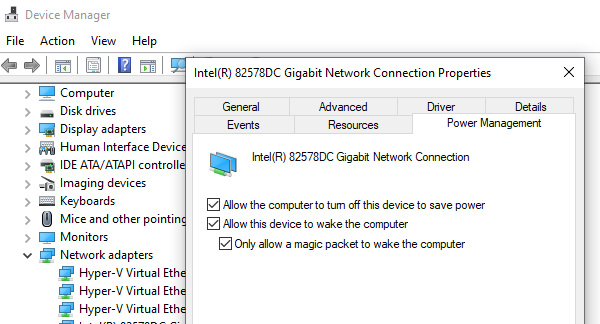
Power-saving settings can cause the network adapter to turn off. When the adapter is off, you lose your network connection. Disabling power saving mode ensures that the network adapter remains powered and available, maintaining a stable and consistent connection.
Press Win + X and select Device Manager from the menu that appears. Expand the Network adapters section. Right-click on your Wi-Fi adapter and select Properties. Switch to the Power Management tab and uncheck the Allow the computer to turn off this device to save power option. Click OK to save changes and see if the issue is resolved.
If you don’t see the Power Management tab, type ‘edit power plan’ in the Windows search bar and press the Enter key. Click ‘Change advanced power settings‘ in the Control Panel window. Expand the Wireless Adapter Settings section in the Power Options window and ensure that the Power Saving Mode is set to Maximum Performance under both ‘On battery‘ and ‘Plugged in‘ options.
4] Reset Network Settings
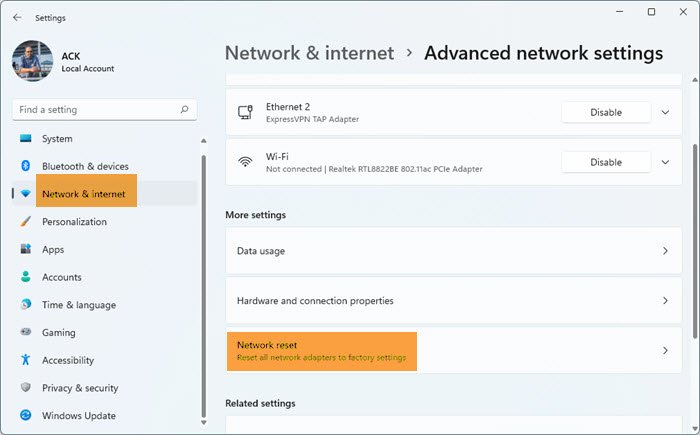
If the Network troubleshooter is unable to fix the WiFi connectivity issue, reset all networking components & settings to their default value using the Network Reset feature.
Open the Settings app and navigate to Network & Internet > Advanced network settings > Network reset. Click the Reset now button next to the Network reset option.
This will remove and reinstall all your network adapters and set other networking components back to their factory settings.
5] Update or Reinstall the Network driver
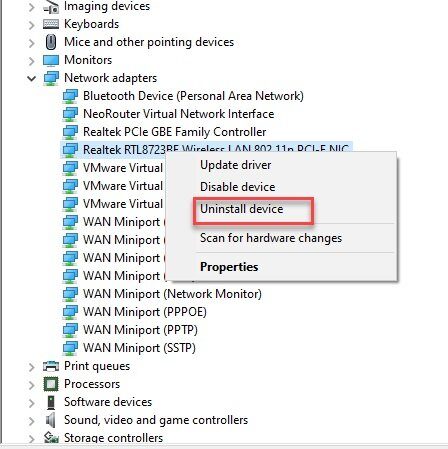
Network adapter drivers are essential for the proper functioning of your Wi-Fi hardware. If these drivers are outdated, corrupted, or incompatible, they can cause frequent disconnections and other connectivity issues.
Open Device Manager and expand the Network adapters section. Right-click on your Wi-Fi adapter and select Update driver. Select Search automatically for updated driver software in the Update drivers window. Windows will search for the latest driver and install it.
If updating the driver does not resolve the issue, try reinstalling the network adapter driver. Expand the Network adapters section in Device Manager, right-click on your Wi-Fi adapter, and select Uninstall device. Confirm by checking Delete the driver software for this device and then click Uninstall. Windows will automatically reinstall missing drivers on the next reboot.
If Windows doesn’t find the correct driver, you may need to manually download and install WiFi drivers.
6] Disconnect the Wi-Fi card and connect it again
If nothing else seems to help, try physically disconnecting and reconnecting the WiFi card (or WiFi adapter). This resets the hardware and ensures it is properly seated, potentially resolving connectivity issues.
Shut down your computer and disconnect the power cord. Next, locate the Wi-Fi card. It is typically located under a panel on the bottom of a laptop or installed in a PCIe slot on the motherboard of a desktop PC.
Open the panel using a screwdriver and remove the screws holding the WiFi card in place. Carefully pull the card out of its slot. Reinsert the card and ensure it is securely connected. Screw the card back into place, close the case, reconnect the power cord, and power on the PC. Your WiFi should be working, maintaining a stable connection.
I hope this helps.
Read: Miracast keeps disconnecting randomly on Windows PC.
How do I fix Wi-Fi disappearing on Windows 11?
If Wi-Fi is disappearing on your Windows 11 PC after installing Windows Update or a Feature Upgrade, log into your router’s web interface and ensure that it’s functioning correctly. Update the router’s firmware if required. Next, check if you have any VPN software installed on your computer. If it is not compatible with Windows 11, uninstall it. If the problem continues, update the WiFi driver and run Network and Internet Troubleshooter.
Read Next: Device frequently disconnects from Windows hotspot & fails to reconnect.
Leave a Reply